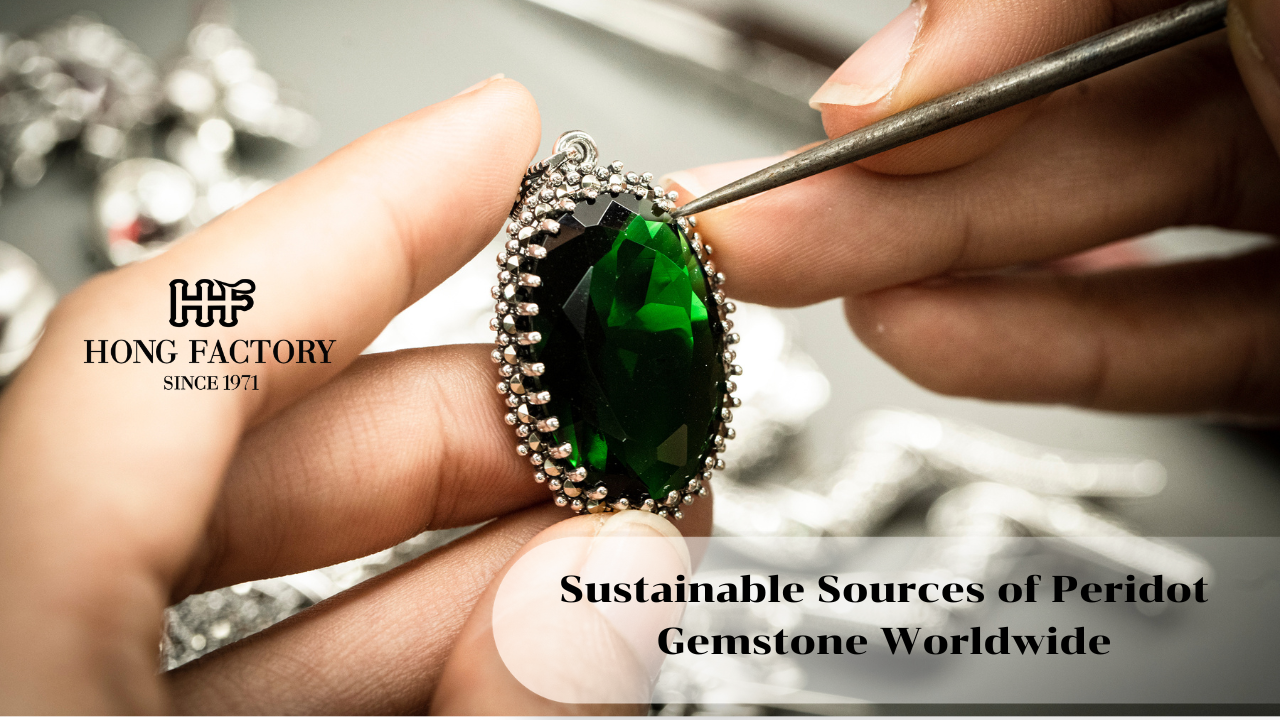Peridot is one of the few gemstones that glows with a naturally bright and refreshing green hue. Its unique beauty and strong symbolic meaning have made it popular across the world. As consumers increasingly value transparency and responsible sourcing, the demand for sustainably mined gemstones is rising. Fortunately, the peridot gemstone is found in several regions known for ethical practices, natural origins, and environmentally conscious mining.
This article explores the sustainable, responsible, and globally significant sources of peridot, helping jewelry lovers understand where their stones come from and how to choose peridot with confidence. 925
Understanding Global Sources of the Peridot Gemstone

The Peridot Gemstone is formed deep within the Earth’s mantle and brought to the surface through volcanic activity. Because of its unique geological origin, peridot is found in limited locations—many of which prioritize sustainable mining, local craftsmanship, and community support.
Below are the most important and sustainable peridot sources worldwide.
-
Pakistan – One of the World’s Finest Peridot Origins
Pakistan’s Suppatt region in the Kashmir area produces some of the world’s highest-quality peridot. These gems are known for their:
- intense, vibrant apple-green color
- exceptional clarity
- minimal inclusions
Sustainability factors:
- Many mines use traditional manual tools rather than heavy machinery
- Local communities manage and benefit from the mining
- Reduced environmental impact due to small-scale extraction
Pakistan peridot is highly desirable for collectors and premium jewelry.
-
China – A Leading Producer with Responsible Mining Practices
China is currently one of the largest producers of commercial-grade peridot. Much of the gemstone comes from the Xinjiang province, where peridot occurs in basaltic volcanic rock.
Benefits of Chinese peridot sourcing:
- Large supply ensures stable pricing
- Improvements in mining regulation in recent years
- Community-based mining that supports local employment
China’s peridot ranges from light green to rich olive tones, making it suitable for both mass-market and fine jewelry.
-
Myanmar (Burma) – Traditional Craftsmanship Meets Natural Beauty
Myanmar has long been known for its beautiful peridot, often displaying a deeper green hue compared to other sources.
Sustainability points:
- Mining regions rely more on hand extraction
- Deeper connection to local culture and traditional craftsmanship
Though production levels vary, Myanmar remains an important source for jewelers who value artisanal origins.
-
United States (Arizona) – Ethically Managed Peridot from Native Lands
One of the world’s most ethically sourced peridots comes from the San Carlos Apache Reservation in Arizona. This region produces a significant amount of global peridot, known for its bright and glowing green tones.
Why Arizona peridot is sustainable:
- Mined under the control of the San Carlos Apache Tribe
- Profits directly support local communities
- Environmentally sensitive extraction methods
- Strong cultural respect for the land
Arizona peridot is a top choice for conscious consumers.
-
Vietnam – Rising Source with Eco-Friendly Potential
Vietnam is an emerging source for high-clarity peridot with strong green saturation. Mines are typically small-scale and community-driven.
Sustainability aspects:
- Light-impact mining
- Local workforce empowerment
- Natural, untreated gemstones
Vietnamese peridot is becoming increasingly popular among jewelry designers.
-
Tanzania – A New African Contributor to Ethical Gem Mining

Tanzania produces peridot in smaller quantities, but with excellent color quality.
Ethical considerations:
- Many mines follow fair-trade principles
- Growing focus on safe labor practices
- Increased transparency in gemstone sourcing
Tanzania is gaining recognition as a responsible source of colored gemstones.
-
Norway – Rare, Environmentally Stable Deposits
Norway possesses unique peridot deposits within its ancient geological formations. Although production is small, it is known for:
- highly controlled environmental standards
- government-regulated mining
- excellent clarity and yellow-green color tones
Norwegian peridot is considered exclusive and highly collectible.
-
Egypt – The Historic Birthplace of Peridot
The island of Zabargad in the Red Sea produced peridot for thousands of years and supplied the ancient world. Today, mining in the region is extremely limited to preserve the environment.
Sustainability benefits:
- Controlled mining operations
- Strong emphasis on heritage preservation
- Minimal impact from modern machinery
Though rare today, Egyptian peridot remains an iconic part of gemstone history.
How to Choose Sustainably Sourced Peridot
When purchasing peridot, consider the following:
- Ask for origin: Stones from Arizona, Pakistan, and Norway are known for responsible mining.
- Look for untreated stones: Most peridot is natural and free from chemical enhancements.
- Buy from transparent jewelers: Ethical brands often provide detailed sourcing information.
- Support local craftsmanship: Artisan-made jewelry often aligns with sustainable practices.
Why Sustainable Sourcing Matters
Choosing responsibly mined peridot helps:
- protect local ecosystems
- support fair labor conditions
- promote transparent supply chains
- ensure long-term availability of natural gemstones
It also allows you to enjoy jewelry that is not only beautiful but ethically meaningful.
The Peridot Gemstone is sourced from several regions around the globe—many of which prioritize sustainability, tradition, and ethical extraction. From the world-class mines of Pakistan to the community-managed operations in Arizona, responsibly sourced peridot offers both beauty and integrity.
For consumers who value eco-friendly choices and transparent origins, sustainably mined peridot provides the perfect blend of natural brilliance and conscious craftsmanship. Whether set in rings, earrings, or pendants, ethically sourced peridot jewelry is a radiant symbol of both style and sustainability.
